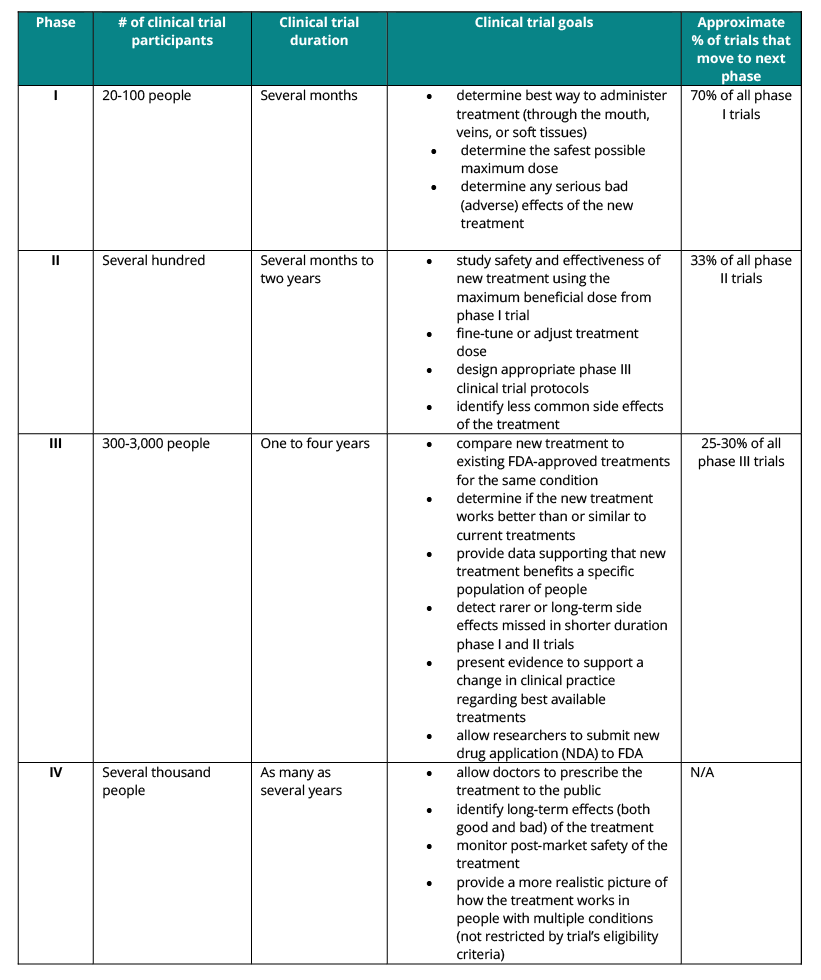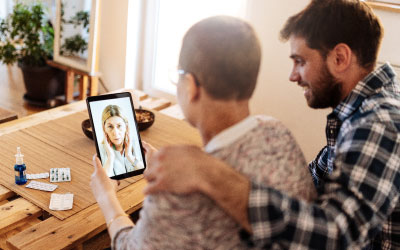How Do Clinical Trials Work?
Clinical trials help doctors and researchers to figure out what works—and what doesn’t—in potential treatments. These studies answer questions about a new treatment’s safety and effectiveness.
Researchers compare new treatments to existing treatments to determine which works best for certain health problems. This process helps doctors know which treatments to try first for the best results.
Clinical trial process
The United States Food and Drug Administration (FDA) has a strict approval process for new treatments. This process occurs over a series of steps or phases.
These steps include:
- Preclinical trials
- Investigational new drug (IND) application to the FDA
- Phase I clinical trial
- Phase II clinical trial
- Phase III clinical trial
- New drug application (NDA) to the FDA
- Phase IV post-marketing surveillance after FDA approval
Preclinical trials
Preclinical trials are also known as laboratory studies. Researchers do these studies before clinical trials on humans take place.
Preclinical trials' main goal is to discover if the new treatment could harm people. There are two types of preclinical trials:
- In vitro preclinical trials: Researchers expose living target cells, such as human or animal cancer cells, to the new drug or treatment. Researchers grow these target cells in a test tube or lab dish.
- In vivo preclinical trials: The next step tests how the new drug or treatment works in a whole, living organism. Preclinical trials are also known as laboratory studies. Researchers do these preliminary studies before applying to the FDA and before beginning clinical trial phases. These results suggest whether the new treatment is safe to use.
Investigational new drug (IND) application
Preclinical studies give scientists useful information about how a new treatment works. But the new treatment still must be tested in humans.
Researchers must submit a detailed application to the FDA before testing the new treatment in people. This application includes the following details:
- Any preclinical study results showing effectiveness and safety of the new treatment
- All details of the plans for any clinical trials involving humans (study protocols)
- Information about the manufacturer of the drug or device
- Information about how the new drug or device is made
- A list of all materials or substances in the new drug or device
- Details about the clinical trial team and location of the clinical trial
Study protocols lay out the design of the clinical trial and answer questions, including:
- How long is the study?
- How many people are in the study?
- What are the eligibility criteria for study participation?
- Can the control group receive the new treatment when the study is over?
- What is the treatment dosage?
- How is the treatment delivered (by mouth, vein, injection into soft tissues)?
- What standardized steps will the surgeon take if the treatment is surgical?
- What data will researchers collect, how they will collect the data, and how often they will collect it?
- How will the researchers analyze the data?
Four phases of clinical trials
The new treatment progresses through four distinct phases (I-IV) after obtaining FDA approval of the IND. Each phase differs in number of participants, duration, and trial goals.

Download a pdf of this table and other background on how clinical trials work.
In addition, the webinar video, “Clinical Trials: A Guide for Leukemia Patients and Caregivers,” addresses how leukemia treatment has been changed by clinical trials, how clinical trials are developed, and factors to think about if you are considering a clinical trial. It is presented by Karen Carlson, MD, PhD, from Medical College of Wisconsin.



